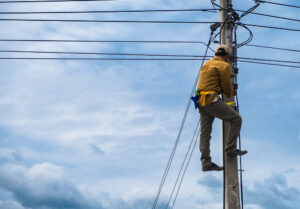Back to Basics is a weekly feature that highlights important but possibly overlooked information that any EHS professional should know. This week, we examine how to protect lone workers.
If you have workers working alone or in remote areas, you need to ensure that they’re safe on the job.
Lone workers include people who don’t work during regular business hours, such as janitors, security guards, special production, plant maintenance or repair staff, and delivery truck drivers. Typically, lone workers are those who work by themselves or in an environment where help is not readily available in the event of injury, illness, or an emergency.
They may be without close or direct supervision, may be self-employed, and can be in fixed establishments where only one person works on the premises, such as gas stations, kiosks, or small workshops.
In a recent report, the National Safety Council (NSC) estimates that there are 53 million lone workers in the U.S., Canada, and Europe. A StaySafe survey of 478 companies in 2021 found that 68% reported experiencing an incident involving a lone worker in the past three years, 20% of which were described as quite severe or very severe.
Some of the risks faced by lone workers include:
- Chemical exposure
- Electrocution
- Falls from height
- Machinery entrapment
- Slips or falls
- Getting struck by heavy equipment or vehicles
- Sudden illness
Lone workers may also face violence or aggression from clients, customers, or the public. Workers in public-facing industries such as healthcare, retail, and transportation are susceptible to workplace violence, according to OSHA. Additional risk factors of workplace violence tied to lone work include:
- Prolonged or irregular shiftwork
- Working alone
- Working in isolated locations or in patient/customer homes
- Handling cash or valuables
- Delivery of passengers, goods, or services
Limited guidance
The Occupational Safety and Health Administration (OSHA) doesn’t have a specific standard about lone worker safety, but 1915.84 addresses hazards faced by employees working alone in shipyards. It requires employers to ensure that lone workers are accounted for by sight or verbal communication, which can include safety check-ins or ways to connect with their manager or office.
In addition, 1926.800 applies to underground construction in tunnels, shafts, chambers, and passageways, where “any employee working alone underground in a hazardous location who is both out of the range of natural unassisted voice communication and not under observation by other persons, shall be provided with an effective means of obtaining assistance in an emergency.”
Section 5(a)1 of OSHA’s General Duty Clause states that employers must provide workers with a place of employment that is free from hazards that could cause serious physical harm to the employees.
Have a policy
Businesses should have a lone worker policy that defines lone work and includes a risk assessment that identifies the risks by job, location, and lone worker type. The policy should detail the actions taken to reduce risks to lone workers.
The policy should also include employer and employee responsibilities for lone worker safety, and how to report hazards or incidents. Update the policy regularly and involve lone workers by getting their input on risks and recommendations for improvements.
Provide awareness information and training to ensure lone workers are up to date on the latest developments.
Technology can help employers monitor their lone workers. In addition to using cell phones, companies can use GPS and other apps or devices to monitor workers’ vital signs and detect falls. Workers can be outfitted with devices that allow them to press a panic button if in distress; some devices can also provide automatic alerts if a worker falls.
Best practices
The American Society of Safety Professionals (ASSP) in 2021 identified several best practices for lone workers, including the following:
- Identify the hazards lone workers may face on the job
- Conduct a lone worker risk assessment by talking with or surveying workers and conducting formal job site or job hazard analyses
- Engineer out lone work hazards that pose a high risk of severe injury, illness, or fatality (SIIF) (e.g., using aerial drones for inspections at height or autonomous mobile robots for confined space entry)
- Schedule high-risk tasks to be completed during normal business hours or when another worker can help
- Provide appropriate training and education for lone workers, including how to conduct their own task hazard analyses
- Establish communications procedures with lone workers (e.g., use of two-way radios, in-person check-ins, wearable technology, or cell phone check-ins)

